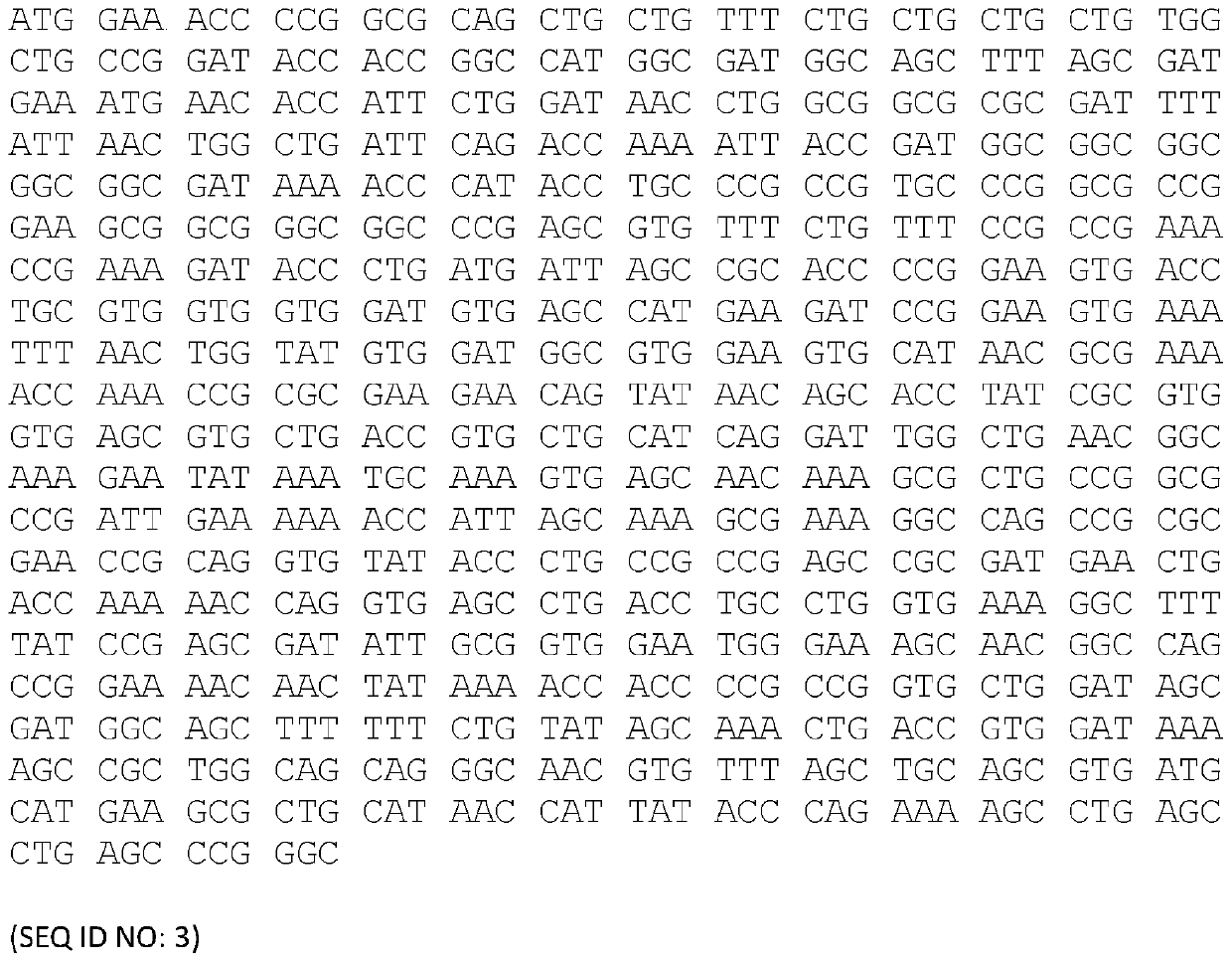Glp-2 fusion polypeptides and uses for treating and preventing gastrointestinal conditions
A GLP-2, peptibody technology, applied in the direction of fusion polypeptide, hybrid peptide, fusion of prolonging plasma life, etc., can solve the problem that GLP-2 does not show the prospect
- Summary
- Abstract
- Description
- Claims
- Application Information
AI Technical Summary
Problems solved by technology
Method used
Image
Examples
example
[0321] The invention is also described and illustrated by means of the following examples. However, the use of these and other examples anywhere in the specification is illustrative only and in no way limits the scope and meaning of the invention or of any exemplified term. Likewise, the invention is not limited to any particularly preferred embodiments described herein. In fact, many modifications and variations of the present invention will be apparent to those skilled in the art from reading the present description, and such variations can be made without departing from the spirit or scope of the invention. The invention is to be limited only by the terms of the appended claims, along with the full scope of equivalents to which those claims are entitled.
example 1
[0322] Example 1: Molecular weight and FcRn binding of GLP-2 peptibody
[0323] Binding to the Fc neonatal receptor (FcRN) allows for recycling of the molecule and results in prolonged serum half-life of Fc fusion proteins in vivo. Recycling occurs when molecules are passively taken up into the cell and the pH of the endosome is low. This results in binding of the Fc portion of the molecule to FcRN. When FcRN is recycled back to the cell surface, the pH is then neutralized and the protein is released back into the serum.
[0324] Binding to the extracellular domain of FcRN was measured by surface plasmon resonance (SPR) using a Biacore system. Direct attachment with FcRn was achieved via amine coupling of CM5 chips to FcRn under the following conditions:
[0325] i) Dilute hFcRn (self-expressed and purified) to 5 μg / mL in acetate buffer pH 5.0.
[0326] ii) 5 μg / mL FcRn was immobilized on a CM5 chip with a target of 500 RU in PBS pH 7.0
[0327] iii) Final response 454RU ...
example 2
[0335] Example 2: Protein Stability Analysis
[0336] Each of the GLP-2 peptibodies was tested by measuring the melting temperature with nano-differential scanning fluorimetry (NanoDSF). NanoDSF is a temperature ramp measurement of protein stability over a range of temperatures. The stability of tryptophan was measured by fluorescence as reflected by the ratio of fluorescence at 350 nm to fluorescence at 330 nm. Depending on the analysis, one or more melting temperatures are determined. Since a protein in a certain state is understood to have a certain melting temperature, the number of observed melting temperatures reflects the number of different states. GLP-2 peptibodies A, B, E, J, K, L and M have two states, as shown in Table 2 below.
[0337] SEC-MALS analysis was performed to determine the initial state (main peak) and its molecular weight. As shown in Table 2 below, GLP-2 peptibodies A, B, E, J, K, L, M and O (Fc fusions) eluted at molecular weights indicative of d...
PUM
| Property | Measurement | Unit |
|---|---|---|
| concentration | aaaaa | aaaaa |
| concentration | aaaaa | aaaaa |
| length | aaaaa | aaaaa |
Abstract
Description
Claims
Application Information
 Login to View More
Login to View More - R&D
- Intellectual Property
- Life Sciences
- Materials
- Tech Scout
- Unparalleled Data Quality
- Higher Quality Content
- 60% Fewer Hallucinations
Browse by: Latest US Patents, China's latest patents, Technical Efficacy Thesaurus, Application Domain, Technology Topic, Popular Technical Reports.
© 2025 PatSnap. All rights reserved.Legal|Privacy policy|Modern Slavery Act Transparency Statement|Sitemap|About US| Contact US: help@patsnap.com



